50 of the Best Arthouse Horror Films
Discover the most aesthetically pleasing, experimental, and boundary-pushing works of art in the horror genre on this list of 50 arthouse titles.
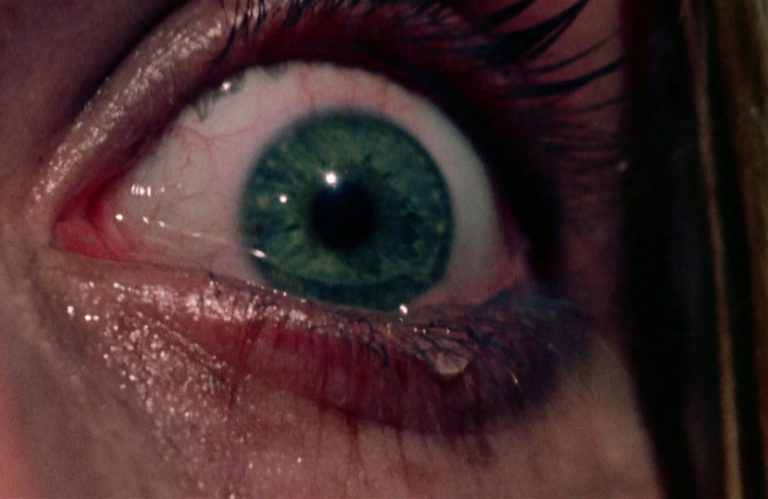
Varying perceptions exist about what “arthouse” cinema is, and if one were to search for a definition or explanation on Google, they’d fail in getting a uniform answer. “Arthouse” began as a term in the industry for repertory theaters, cinemas that existed outside mainstream distribution, and independent and avant-garde films. These productions had more meaning and were more artistic and experimental in style than anything being produced by Hollywood.
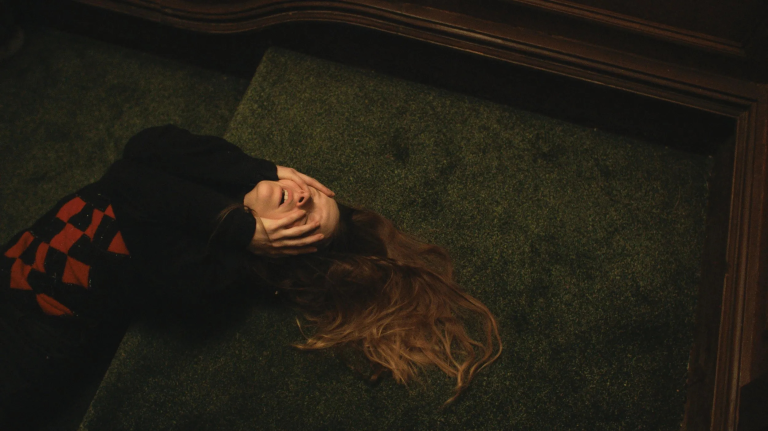
Over the decades, “arthouse” evolved into something that encompasses so much more. It used to be the case that arthouse films were typically independent modest productions, but the term now includes titles by many prominent filmmakers and bigger studios. While arthouse films have a niche quality about them and are aimed at a certain type of public, they have found their way to bigger audiences. A24, which started as a small indie company and became a filmmaking powerhouse, has certainly helped accomplish this with numerous of their arthouse films, many of which are horror gems, like The Witch (2015) and Midsommar (2019). Titles like these have shown that arthouse horror has been undergoing a renaissance in recent years.
So what exactly is arthouse horror? It’s not so much of a subgenre of horror, as it is a specific type of film—one that isn’t just “artsy” but that pushes the boundaries of cinema. It’s a horror picture with a certain “weirdness” or abstract quality about it. It’s cerebral, elegantly crafted, through-provoking, and oozing with meaning and symbolism. It relies on atmosphere and cinematography more than it does on jump scares. An arthouse film can function as one big metaphor, and is richly abundant in them. Horror tropes aren’t used, and if they are they present themselves in subversive and innovative ways. There’s always something you can feel, but can’t quite name, simmering beneath the surface. Often it takes multiple viewings to fully understand the film, or you interpret it in a different way each time you rewatch. Filmmakers take more creative liberties and risks—aesthetically, with the narrative structure, and with storytelling—resulting in experimental and profound horror movies.
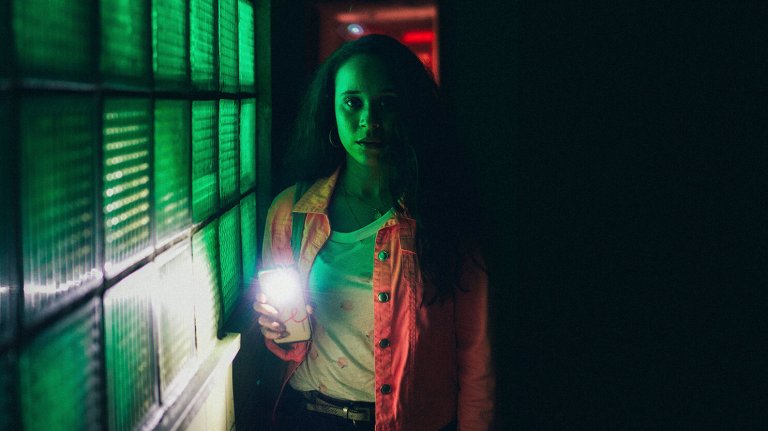
From The Cabinet of Dr. Caligari (1920) to 70s Italian giallos to Cronenberg body horror to modern horror auteurs like Ari Aster and Robert Eggers, curated below are the 50 best arthouse horror films.
The Cabinet of Dr. Caligari (1920)

A hypnotist seems to control the every move of a clairvoyant somnambulist and may be influencing him to commit murder. Directed by Robert Wiene, The Cabinet of Dr. Caligari laid the foundation for a century of horror. Early Universal horror movies like Frankenstein (1931) are visually and atmospherically indebted to this silent Expressionist picture, as are 1940s noir films. It was pivotal in arthouse cinema and has influenced filmmakers like Alfred Hitchcock, David Lynch, Tim Burton, and Stanley Kubrick. The film’s set was designed in striking Expressionist style, discombobulating the senses and mind. Themes explored include authoritarianism, mind-numbing authority and conformity, ideological brainwashing, perception of reality, and identity. Its twist ending is of much discussion even today. Writers Carl Mayer and Hans Janowicz claimed the bookend scenes involved were forced against their will at the last minute and that they took away from the film’s symbolism and political message.
Vampyr (1932)
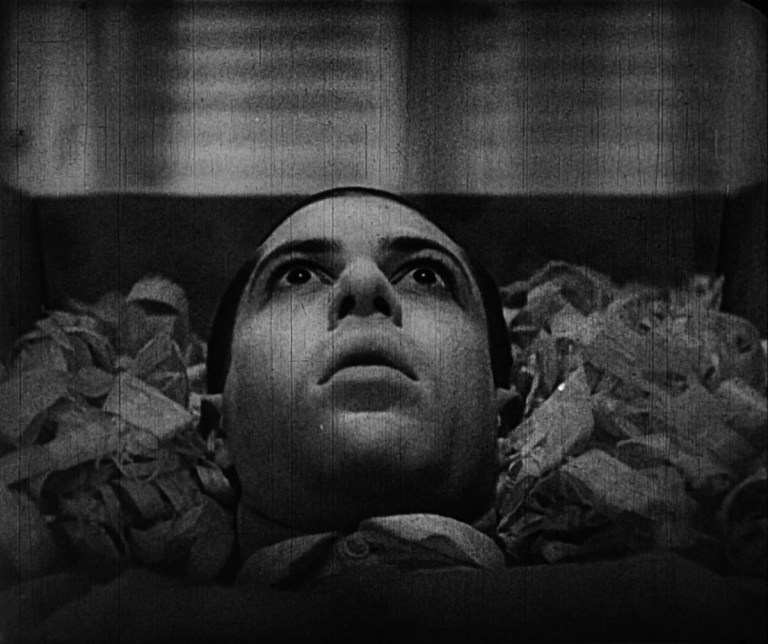
A student of the occult arrives at a small inn in Courtempierre, a village outside of Paris. Shadows guide him to a chateau, where a severely ill teen girl with fresh bite marks requires his help to break her vampiric curse. This German-French co-production was shot completely on location by Danish filmmaker Carl Theodor Dreyer. It was Dreyer’s first sound picture and was to be made in French, German, and English. The actors mouthed their lines in each language to correspond to their voices that were to be recorded in post-production. Far less emphasis was placed on dialogue, and more on cinematography and atmosphere. The effect achieved is mesmerizing—a dreamlike terror, a sense of foreboding, and a constant reminder of death with recurrent unsettling imagery. Vampyr is one of horror’s greatest nightmares. Director Dreyer said of the film, “I wanted to create a waking dream on screen and show that horror is not to be found in the things around us but in our own subconscious.”
Cat People (1942)

This queer-coded classic revolves around a beautiful, strange, and lonely Serbian fashion illustrator living in New York City, Irena (Simone Simon), who believes that she’ll become a panther-like creature if she becomes aroused due to an ancient curse affecting the women in her lineage. It causes tension with her new disbelieving husband Oliver (Kenth Smith), who pushes her to see a psychiatrist and begins growing closer to his attractive coworker Alice (Jane Randolph). The movie, directed by Jacques Tourneur, leaves most of its fears to the viewer’s imagination. It embraces gothic horror, only to later reveal the truth of its dark fantasy. Cat People features the first jump-scare in cinema. The technique, which startles the audience with something completely harmless, came to be known as the “Lewton bus” and is named after the movie’s producer.
Black Sunday (1960)
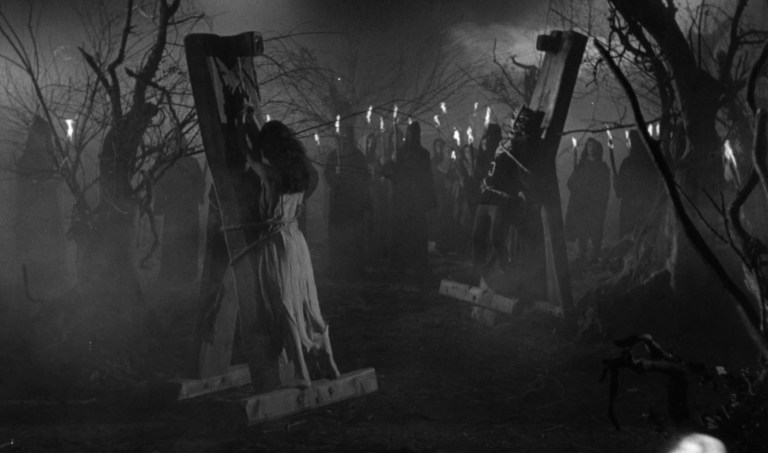
Iconic scream queen Barbara Steele stars in a dual role in this timeless horror. The film opens with Asa Vajda, a princess and vampiric witch in service to Satan, being executed by her brother in 1630s Moldavia. Two centuries later she returns to exact vengeance on his descendants, among them Katia Vajda, a look-a-like whose lifeforce Asa is determined to drain. Mario Bava created a prime example of gothic atmosphere, combining B-horror elements with arthouse style to a unique and powerful effect. The Italian filmmaker was a cinematographer before he became a director, and it really shows in this movie. Black Sunday is a monochrome masterpiece full of rich symbolism, decadent texture, and gruesome beauty.
Carnival of Souls (1962)

Carnival of Souls begins with a drag race and a car full of young women plunging off a bridge into a lake, where there’s no sign of the vehicle or the girls. Hours later, Mary Henry (Candace Hilligloss) miraculously surfaces from the water, but cannot recall how she survived. She relocates to a new city to work as a church organist, where she finds herself unable to assimilate with the locals. Her attempt at a fresh start is disturbed by visions of a ghoulish demon-faced man who compels her to the pavilion of an abandoned carnival. The movie serves as a depiction of detachment and loneliness, an exploration of mortality and humanity, and as a critique on organized religion. It made commentary on toxic male behavior and normalized things like therapy, the independence of women, and female sexual liberation. Carnival of Souls didn’t receive acclaim until subsequent decades after its release, but its power cannot be denied. It remains one of the most influential pictures, inspiring filmmakers like David Lynch and George A. Romero. The movie isn’t scary, but existentially gutting.
The Night of the Living Dead (1968)
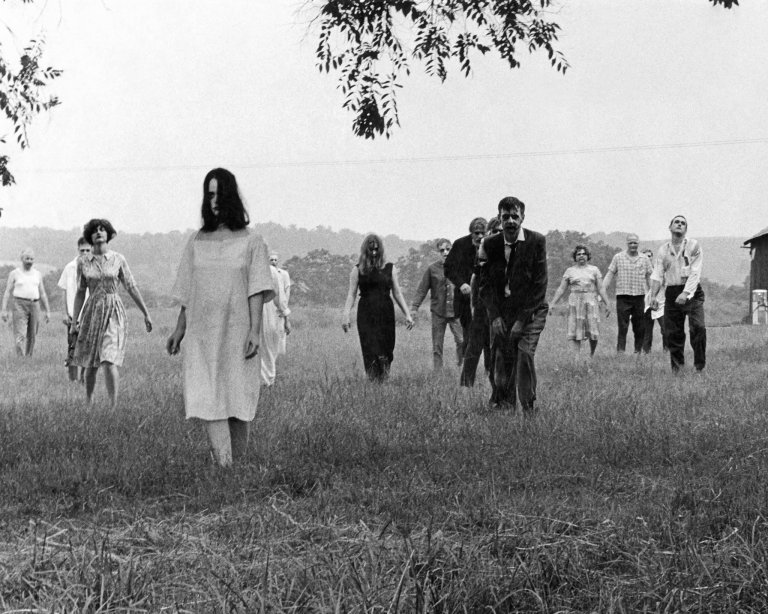
George A. Romero made history on limited experience and a shoestring budget with the undeniably iconic Night of the Living Dead, a movie that not only sparked numerous sequels, remakes and spin-offs, but countless imitators. Nothing comes close to the original, whose flesh-eating ghouls popularized the portrayal of zombies in modern horror. The film featured the first ever Black lead in horror cinema. Its messages about racism, racial relations, and race-based dehumanization are undeniable, but Romero reportedly didn’t intend to make it a film about race. The writer-director shared that he cast Duane Jones simply because he was the better actor. Night of the Living Dead can also be viewed as a critique of capitalism, consumption, and American society. However interpreted, this deceptively simple horror flick about a group of trapped strangers trying to fend-off raised carnivorous corpses is one of the most thought-provoking tales in the genre.
The Picnic at Hanging Rock (1975)
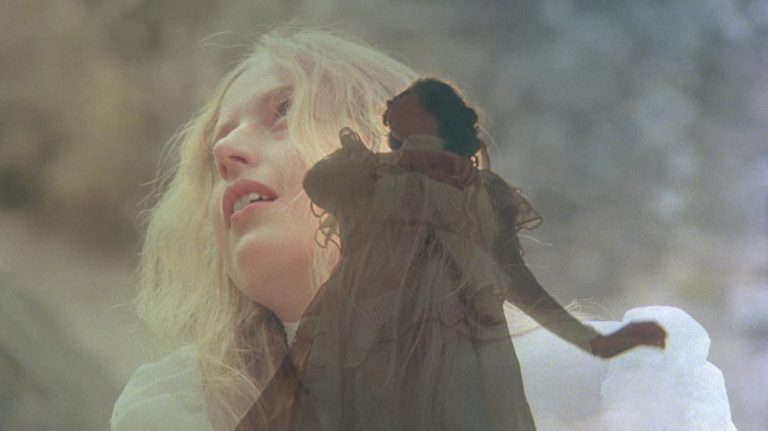
Peter Weir directed this enchanting and perplexing Australian film based on Joan Lindsay’s 1967 novel of the same name. In the early 1900s, the typically strict headmistress of an all-girls boarding school allows a picnic field trip to Hanging Rock, a beautiful and unusual volcanic formation. A few of the girls sneak away to explore the upper slopes and maze-like tunnels, where they fall into a trance-like state. They never make it back, and neither does their math teacher. The rest of the movie deals with the aftermath. The Picnic at Hanging Rock is a mesmerizing and haunting film that will engross you with its dreamlike mood and aesthetic. It leaves you with more questions than answers. Its terror and magic lie precisely in the not knowing. As Mr. Whitehead the gardener observes after the girls’ disappearances, “There’s some questions got answers and some haven’t.”
Suspiria (1977)

Anyone who has watched Dario Argento’s Suspiria will never forget the glossy lighting, colors, woozy camera movements, synth heavy musical score, hypersaturated visuals, abstract art quality, elaborate set design, and atmosphere that made it a masterpiece. To watch the film is to have an immersive and spine-tingling experience. Suspiria doesn’t rely on plot to elicit fear, but rather triggers the audience’s senses to terrify them. Dario Argento was heavily inspired by Snow White and the Seven Dwarfs (1937). That influence led to a dazzling and terrifying result—a surreal and psychedelic gothic fairy tale. Just like all fairy tales, Argento’s starts with a narration, a “once upon a time” of sorts: “Suzy Bannion decided to perfect her ballet studies in the most famous school of dance in Europe. She chose the celebrated academy of Freiburg. One day at 9 in the morning she left Kennedy Airport, New York and arrived in Germany at 10:40 p.m. local time.” The wide-eyed Jessica Harper appears on screen as Suzy bathed in red light and exiting an airport. Sliding into a cab and looking every bit the Disney princess, our protagonist is unaware that she’s about to come face to face with a coven of evil witches.
Eraserhead (1977)

No arthouse horror list would be complete without David Lynch’s first feature-length film, the surrealist work of art Eraserhead, easily one of the boldest and most bizarre movies ever made. Shot in black and white and set in a desolate industrial cityscape, the film is devoid of any color and hope. Henry Spencer (Jack Nance) drifts through his sooty world without purpose until he’s left to care for his horribly deformed newborn son who resembles an alien worm. The new father experiences unsettling hallucinations and visions that push the boundaries of human emotion and the human psyche. Although it’s thought that Eraserhead was influenced by Lynch’s fear of fatherhood, the writer-director hasn’t confirmed this. Eraserhead will inspire a plethora of different interpretations in each person. Lynch has refused to elaborate on the meaning of what he calls his most spiritual film. In an interview with Vulture he shared that people “bring so much of what makes them react, it’s already inside of them” and that every viewer “gets a different thing from every film.” He went on to say, “No one, to my knowledge, has ever seen the film the way I see it. The interpretation of what it’s all about has never been my interpretation.
Possession (1981)
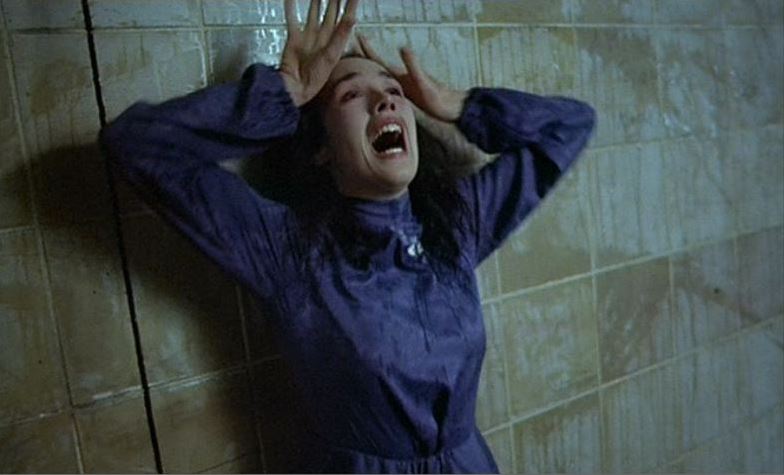
Possession isn’t only the greatest anti-romcom, but one of the finest pieces of cinema to ever be conceived. It’s known for its iconic deranged tunnel scene, one of the most harrowing depictions of internal chaos to ever be put on film. From frame one, Possession puts you in a chokehold and squeezes the air and life out of you. The movie is an anxiety attack from beginning to end, propelled by frenzied camerawork and bold performances. The screenplay was written by Polish writer-director Andrzej Żuławski while he was going through a painful divorce and serves as a meditation on codependency, marriage, and the disintegration of relationships. It revolves around Anna (Isabelle Adjani), who displays increasingly erratic behavior after asking her husband Mark (Sam Neill) for a divorce. His obsession with getting to the bottom of the dissolution of their marriage drives him to criminal acts, but Anna’s secret turns out to be much more sinister than her husband’s suspicions of infidelity.
The Reflecting Skin (1990)

The Reflecting Skin is a forgotten and criminally underrated gem that deserves a far wider audience. It blends Prairie Gothic tropes and surrealism through the perspective of a child to tell its story. Seth Dove (Jeremy Cooper), a young boy living in a rural Idaho town in 1950s America, comes to believe his widowed neighbor Dolphin Blue (Lindsay Duncan) is a soul-stealing vampire and that she’s responsible for his friend’s disappearance. His brother Cameron (Viggo Mortensen) comes back from military service and takes a liking to Dolphin. The Reflecting Skin disturbed audiences with grim storytelling in broad daylight nearly three decades before Midsommar accomplished such a feat. The viewer is subjected to brutality and hopelessness amidst gorgeous shots of bright blue limitless skies, rural farmlands, and never-ending wheat fields. While the film can lean into drama, it presents some genuinely horrific ideas and is at its core a harrowing viewing experience. This movie will leave you feeling like—as Cameron says to Seth—“you never had a chance.”
Let the Right One In (2008)
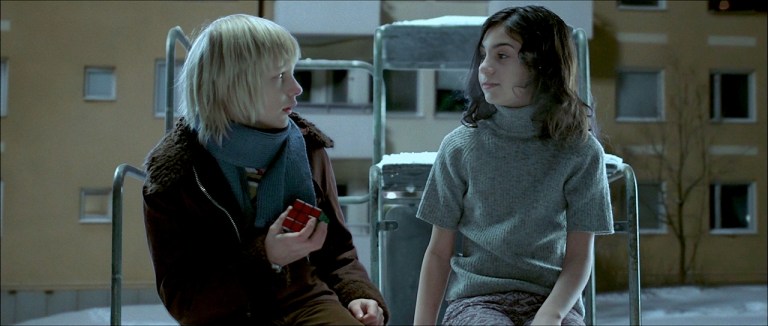
Set in 1982 Stockholm amidst a captivating wintry landscape, Let the Right One In is a compelling coming-of-age romantic horror that reimagines and subverts the vampire trope. 12-year-old loner Oskar (Kåre Hedebrant) spends his nights fantasizing about getting even with the bullies who torment him. When Eli (Lina Leandersson) moves in next door, the two begin exchanging Morse code messages through their adjoining wall and become friends. The girl encourages Eli to stand up for himself, and soon shares her secret with him. Let the Right One In is an atmospheric and pensive film that fully immerses its audiences. It’s an achingly tender meditation on the lasting impact of the friendships we have in our formative years.
The Witch (2015)
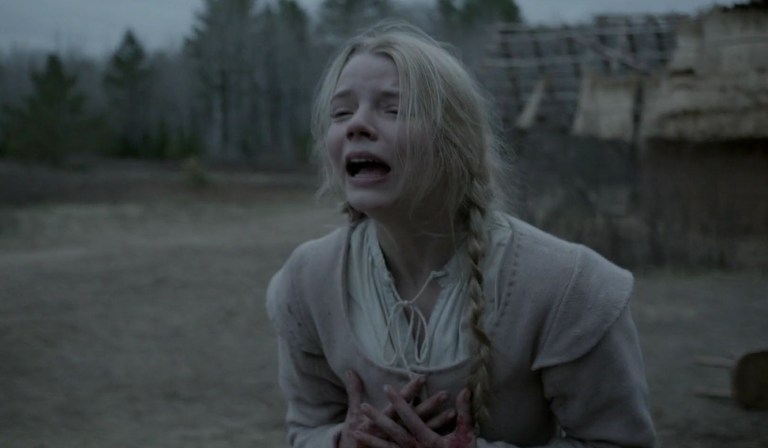
Robert Eggers’ psychological folk horror transports audiences right into 1630s New England with its detail-oriented and gloomy set design. The desaturated color palette further immerses the viewer into the bleak Puritan world of Thomasin (Anya Taylor-Joy), the teenage daughter of a devout Christian family who has been exiled from their settlement. When her newborn brother vanishes and their crops fail, she faces the brunt of the blame for her family’s increasing misfortune. The Witch creates unease and induces paranoia at a meticulous pace and through eerie atmospheric elements. This unnerving exploration of the horror of religion, sexual repression, sin, patriarchal power, and female freedom was the writer-director’s feature directorial debut and the film that launched his career.
The Lure (2015)

This bizarre genre-defying Polish musical horror turns Hans Christen Andersen’s “The Little Mermaid” (1837) on its head. The coming-of-age film explores emerging female sexuality, loss of innocence, sexual exploitation, immigrant exploitation, and the objectification of the female body. Set in 1980s Warsaw, it centers around two carnivorous mermaid sisters, Silver (Marta Mazurek) and Golden (Michalina Olszanka), who are drawn ashore by the gentle singing and guitar strumming of Mietek (Jakub Gierszał). The sirens follow his band back to a nightclub, where they begin performing, singing, stripping, and occasionally flashing their tails. When Silver falls in love with Mietek, who doesn’t see her as human, the bloodthirsty Golden worries that their shared dream of swimming to America is lost. The Lure is a beautifully stylized picture that is deranged and dreamlike in aura—a lush, glam-punk fairy tale set in a fantasy world. And just like classic fairy tales, it’s a brutal and violent story.
Midsommar (2019)
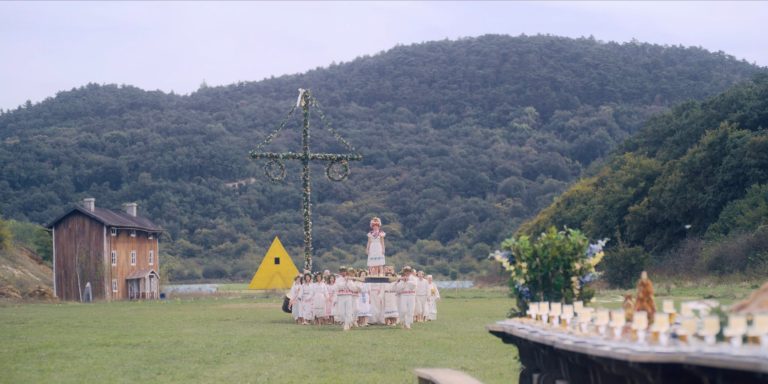
Florence Pugh stars as grief-stricken Dani, who joins her emotionally detached boyfriend and his group of friends on a trip to visit a Scandinavian commune. As they partake in the pagan community’s midsummer festival, their idyllic vacation takes a sinister turn. Ari Aster’s sophomore film, which was written during a breakup, is more stylized and arguably more unhinged than his debut Hereditary. All the horrors here unfold in the stark light of the sun on the beautiful and ethereal Swedish countryside. The brightness of the setting and the vivid colors that aren’t usually seen in horror unsettle the viewer. Their juxtaposition with the heavy themes of the film and the horrors unfolding on screen creates a jarring effect. The writer-director has said that he sees the film “as a fairy tale more than anything else.” He also shared that “the goal was ultimately to make a big, operatic breakup movie that feels the way breakups actually feel: catastrophic, like the world is ending.”
Saint Maud (2019)
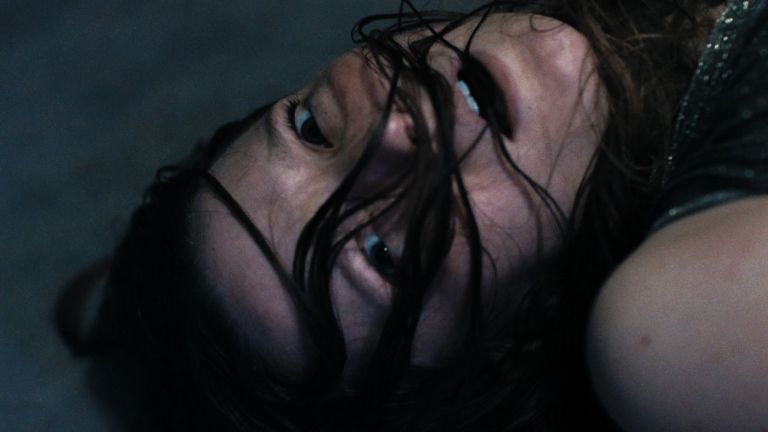
Maud (Morfydd Clark) is a devout young hospice nurse who has an obscure past. When she becomes fixated on saving the soul of one of her patients, her religious fervor intensifies. The surreal religious horror film established writer-director Rose Glass as an arthouse horror auteur among the ranks of Ari Aster and Robert Eggers. Saint Maud is as beautiful as it is disturbing to watch. The cinematography is stunning yet haunting. Mindful shots evoke despair and create layers of meaning. Clark gives a mesmerizing and uncomfortably raw performance in this in-depth exploration of isolation and loneliness that doubles as a reflection of faith. Her character’s descent into madness meticulously builds to a brutal final frame that forever etches itself into the mind of its audience.
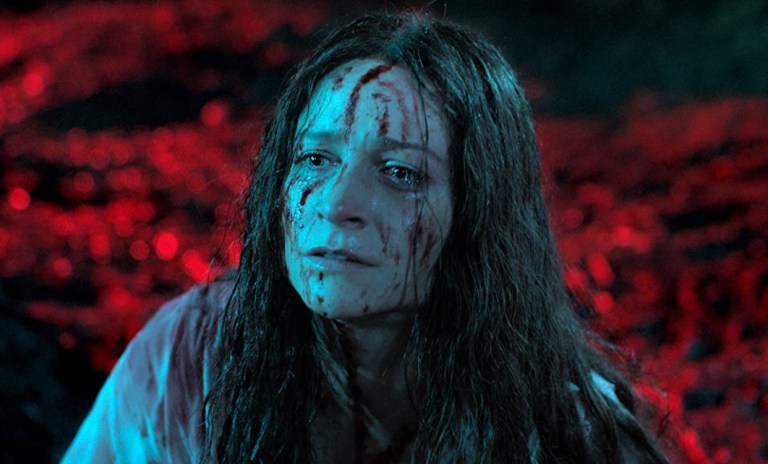
Writer-director Prano Bailey-Bond rose as one of the finest talents and most imaginative minds in modern horror after she surpassed all expectations for a debut feature with the release of her movie Censor, a story set during Britain’s censorship of video nasties in the 1980s. The meta arthouse horror follows film censor Enid Barnes (Niamh Alger) who comes across a video that echoes hazy childhood memories surrounding her sister’s disappearance. Censor is shot primarily on 35mm film, with some Super8 and VHS footage. It’s magnificently stylized with meticulous attention to detail and a giallo and 80’s grindhouse cinema aesthetic. The images in the film are layered with meaning and with the ultraviolence witnessed by our protagonist in the movies she reviews. As they begin to leak into her world, the lines between reality and fantasy are blurred. Does life imitate art? Or is it art that has always been influenced by humanity and its horrors? Censor’s final act is one film buffs will never stop thinking about—one that shows how a mind can lose itself to protect itself from a harsh truth. Censor’s terror lies in the questions it poses about memory, repression, the nature of violence, and subjectivity.
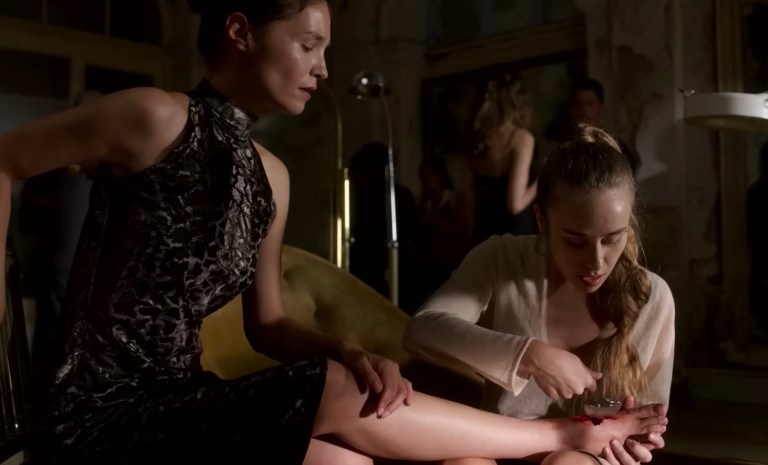
David Cronenberg’s Crimes of the Future is thematically rich—a disturbingly seductive exploration of climate change, humanity’s abuse of technology, art as a becoming, ecological collapse, death, desire, the political perversion of bureaucracy, evolution, and the depths of the human body. The writer-director delivers the “art” in arthouse and the “erotic” in body horror with this futuristic film that sees the human species adapt and evolve to a synthetic environment. One such person is Saul Tenser (Viggo Mortensen), a performance artist whose avant-garde act with his partner involves showcasing his newly developed organs.
Infinity Pool (2022)

The biggest horror in Infinity Pool is late capitalism, and perhaps the depths of depravity humanity is capable of reaching with every resource within reach and no risk of consequences. Brandon Cronenenberg continues to prove that he is very much the son of his father with this sadistic bacchanal of a film. It’s a superbly crafted and grotesque meditation on consumption, wealth inequality, hedonism, self-destruction, identity, death, rebirth, and the ultimately primal nature of humans. The story is told through a cerebral futuristic lens and follows James Foster’s (Alexander Skarsgård) stay at the island of Li Tolqa, where his all-inclusive vacation turns into a surreal horror. After running over a man, which is punishable by death, James discovers the law allows a clone to be created and killed in his place—at a steep price, of course. Guided by the mysterious and unhinged Gabi Bauer, played by Mia Goth, who gives an electric and unforgettable performance, James is thrown into the dark and seductive hedonistic world of Li Tolqa, a world enjoyed only by the one percent.
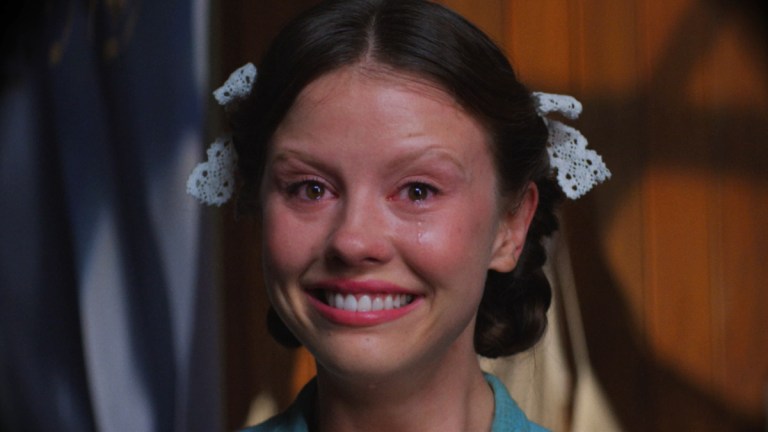
Not only did Mia Goth deliver her finest performance (for which she will never receive her due credit) and a riveting 8-minute monologue that made cinematic history, but she co-wrote the X-traordinary Origin Story with Ti West. Pearl transports its audience to almost 60 years before the carnage of X to Pearl’s farm in 1918, where the serial killer in the making lives trapped in an oppressive familial prison with a mother and father, and a husband away at war. The Technicolor film is a twisted homage to 1939’s Wizard of Oz, with a protagonist who also dreams of escaping her lonely rural existence. Much like Dorothy, who only dreamed of Oz and never really left Kansas, Pearl’s dreams of leaving Texas and becoming a star are just fantasies. The hopelessness and weight of realizing she’ll always be living the life she resents culminates into a chilling ax-wielding chase scene.
More of the greatest arthouse horror films ever made…

Haxan (1922) this silent essay horror film is a faux documentary about the evolution of witchcraft that blends fact and fiction and draws parallels between ancient witches and the mass “female hysteria” seen in Eastern Europe during its age. The movie is split into seven segments, with each chapter delivering on arresting visuals.
Eyes Without a Face (1960) a French-language film about a brilliant plastic surgeon who kidnaps young women and brings them to his estate in the countryside with the intention of removing their faces and grafting them on his disfigured and once-beautiful daughter.
Blood and Black Lace (1964) in this giallo, Mario Bava once again blends B-movie elements with arthouse sensibility for a unique visual style. Here, he makes bold use of bright primary colors. The movie is set at a fashion house in Rome plagued by scandals and where a masked killer begins to prey on the models.
Hour of the Wolf (1968) is a Swedish psychological horror by writer-director Ingmar Bergman, the mind behind Persona (1966). The film is pure nightmare fuel and revolves around a troubled artist living in voluntary exile with his wife on a remote island. After accepting an invitation to dinner at a nearby castle, his mind begins to deteriorate and manifests his inner demons.
Morgiana (1972) an obscure delirious gothic horror from Czechoslovakia. A young woman’s jealousy and greed drives her to dose her sister’s tea with a slow-acting fatal substance.
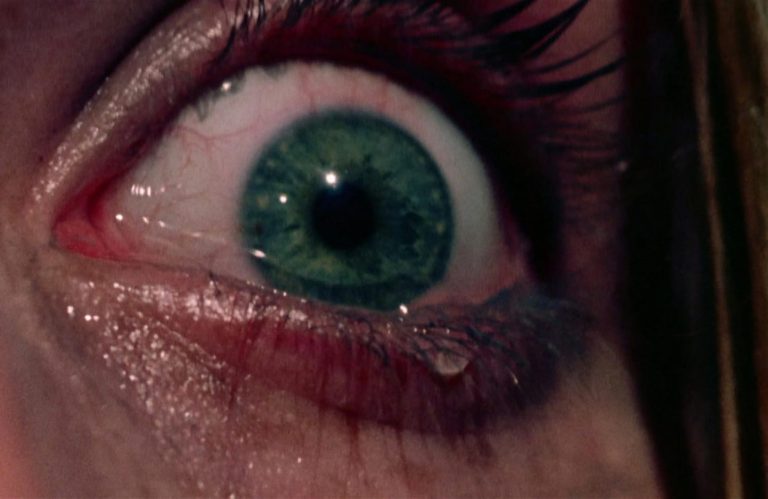
Texas Chainsaw Massacre (1974) an indie film that’s a true arthouse horror—believe it or not—and of the most visceral variety. The film carried depth and had underlying subtext about class division, the Vietnam war, the state of America, and a lack of purpose. It resides in the Museum of Modern Art’s film archives.
House (1977) is a Japanese experimental film and one of the weirdest movies ever made. The story follows a group of schoolgirls who travel to the remote mansion, where they encounter strange phenomena and are devoured one by one.
Alucarda (1977) an English-language Mexican masterpiece about the 15-year-old orphan Alucarda (Tina Romero) who falls in love with a newly arrived girl of her same age. Their romance unleashes a force of evil.
Videodrome (1983) is a sci-fi body horror film directed by David Cronenberg about a programmer at a Toronto TV station who uncovers a broadcast signal of snuff films and attempts to uncover its source.
Santa Sangre (1989) an English-language avant-garde surreal horror set in Mexico about a former circus artist and escaped mental patient seeking to rejoin his mother, the leader of a strange cult.
Cronos (1993) is a horror film written and directed by the brilliant Guillermo del Toro about a mysterious 450-year-old scarab device that grants eternal life, but it comes with a price.
Funny Games (1997) is an invasion horror movie on the surface, but eventually shows that the true horror lies inside the viewer. It explores the depths of violence of two young men who torment a vacationing family. Austrian writer-director Michael Haneke made an English shot-for-shot remake of his film in 2007, but the Austrian 1997 version is far superb.
Inland Empire (2006) an experimental psychological thriller by David Lynch disturbing and nightmarish enough to be considered a horror film. An actress’s reality becomes distorted when she begins to take on the persona of her character in a film she’s recording.
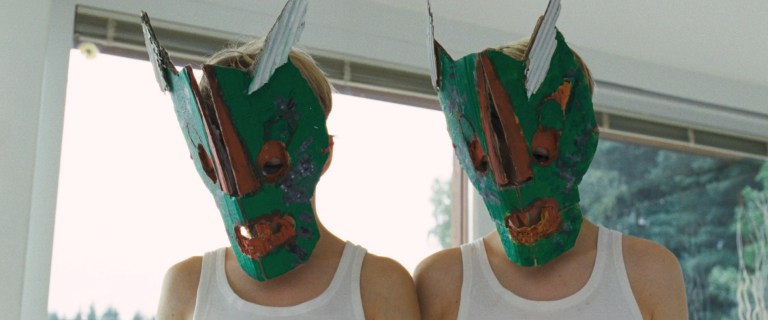
The creepy kids in Goodnight Mommy.
Goodnight Mommy (2014) a gorgeous Austrian horror about two twins who become suspicious of their mother’s identity when she returns home from hospital with bandages wrapped over her face.
It Follows (2014) Maika Monroe stars as Jay Height, a 19-year-old living in the suburbs of Detroit who ends up infected with a deadly curse after a sexual encounter. An entity who can take the form of anyone will stalk her, getting closer and closer, unless she passes it on to someone else.
A Girl Walks Home Alone at Night (2014) is a story about women reclaiming their power. It was written and directed by Ana Lily Amirpour and promoted as “the first Iranian vampire western.” The Persian language black-and-white film follows an anti-hero vigilante with a taste for the blood of bad men.
Raw (2016) a French modern body horror that doubles as a radical coming-of-age tale about sexuality. It comes from the mind of captivating writer-director Julia Ducournau. Justine (Garance Marillier) is a vegetarian in her first semester of veterinary school trying to fit in and undergoing a week of hazing along with other new students. After eating raw meat in one of the hazing rituals, she develops a taste for human flesh.
Get Out (2017) is written and directed by Jordan Peele and stars Daniel Kaluuya as Chris, a young Black man who comes face-to-face with a racist suburban nightmare when he meets his white girlfriend’s family.
Hereditary (2018) is a must on any arthouse horror list. After the matriarch of a family dies, her relatives are left haunted by tragic occurrences.
Braid (2018) an underrated weird girl horror and Lynchian experience. The story revolves around two struggling artists who visit their agoraphobic and psychotic childhood friend at her secluded mansion, where they partake in the game of make believe they had when they were kids.
Suspiria (2018) is a remake that didn’t impress Dario Argento, but was a truly beautiful and haunting reimagining. The film also revolves around an American student who encounters a coven of witches at her new dance academy.
Us (2019) in this masterpiece by Jordan Peele, a family’s vacation is interrupted by their doppelgangers.
The Lighthouse (2019) in this film by Robert Eggers, the lines of reality are blurred in this movie about two lighthouse keepers who lose their sanity on a remote New England island in the 1890s.
Possessor (2020) a Brandon Cronenberg film about an elite assassin who uses brain-implant technology to inhabit other people’s bodies to complete her jobs for high-paying clients.
Titane (2021) Julia Ducournau once again proves she’s a masterclass in creating provocative body horror in her sophomore film. Alexia (Agathe Rouselle), a serial killer with a titanium cranial implant, alters her appearance while on the run for murder. She lands on the doorstep of a firefighter and pretends to be his missing son who disappeared at age seven.
Dawn Breaks Behind the Eyes (2021) a genre-bending and surreal German film by Sri Lankan-Austrian writer-director Kevin Kopacka. The movie is a stylized homage to giallos and to 70s Euro gothic horrors. Two unhappily married people visit their newly inherited dilapidated mansion and their reality shifts. The less you know going in, the better.

Medusa (2021) a trippy and thought-provoking Brazilian film about a vigilante gang of Evangelical girls and young women who prowl the streets for sinners.
X (2022) an arthouse slasher by Ti West starring Mia Goth and set in 1979. To film a pornographic film, a cast and crew travel to a Texas ranch, where they find themselves threatened by a homicidal elderly couple.
A Wounded Fawn (2022) was beautifully shot on grainy 16mm film and has a 70s giallo aesthetic. The film was inspired by Surrealism and The Erinyes, goddesses of vengeance in ancient Greek mythology. It starts off as a horror-thriller about a serial killer who brings his next unsuspecting victim to a secluded house in the woods for a “romantic getaway.” Unexpectedly and halfway through, the movie transforms into a strangely beautiful and surreal exploration of the darkest places of an evil mind.
Nope (2022) is Jordan Peele’s sci-fi horror Western about a man and his sister who discover something sinister in the skies above their California horse ranch.
Further reading:
